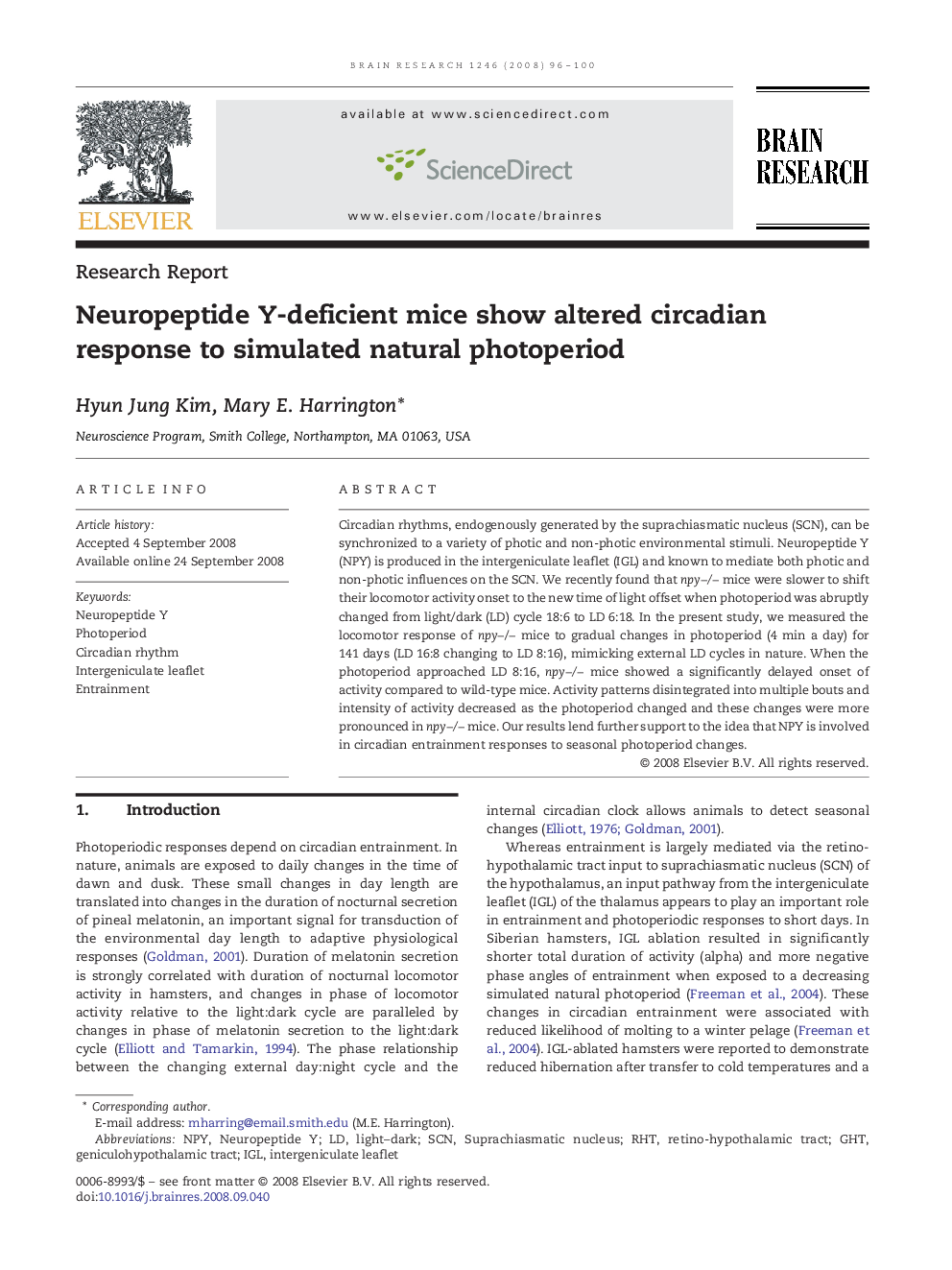| Article ID | Journal | Published Year | Pages | File Type |
|---|---|---|---|---|
| 4328846 | Brain Research | 2008 | 5 Pages |
Circadian rhythms, endogenously generated by the suprachiasmatic nucleus (SCN), can be synchronized to a variety of photic and non-photic environmental stimuli. Neuropeptide Y (NPY) is produced in the intergeniculate leaflet (IGL) and known to mediate both photic and non-photic influences on the SCN. We recently found that npy−/− mice were slower to shift their locomotor activity onset to the new time of light offset when photoperiod was abruptly changed from light/dark (LD) cycle 18:6 to LD 6:18. In the present study, we measured the locomotor response of npy−/− mice to gradual changes in photoperiod (4 min a day) for 141 days (LD 16:8 changing to LD 8:16), mimicking external LD cycles in nature. When the photoperiod approached LD 8:16, npy−/− mice showed a significantly delayed onset of activity compared to wild-type mice. Activity patterns disintegrated into multiple bouts and intensity of activity decreased as the photoperiod changed and these changes were more pronounced in npy−/− mice. Our results lend further support to the idea that NPY is involved in circadian entrainment responses to seasonal photoperiod changes.
